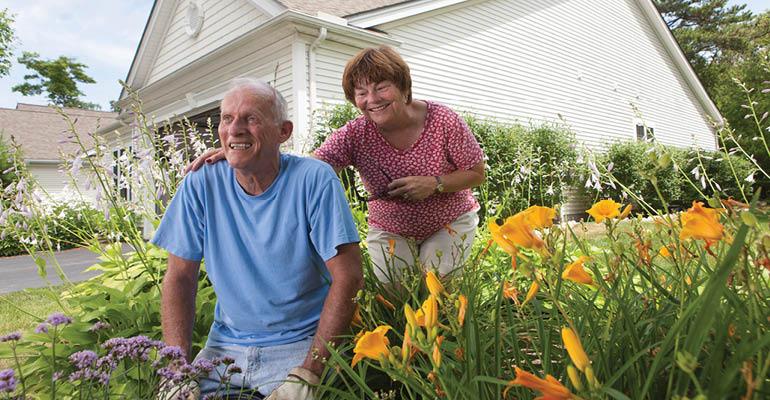Baby boomers transformed society as they came of age—from free-thinking flower children to drivers of our economy. Now the oldest boomers are retiring and can expect to live significantly longer than their parents and grandparents. The progeny of the Greatest Generation is again on the verge of changing everything—this time, the way seniors are cared for and where they live.
New research from NORC at the University of Chicago shows that in just 10 years there will be 33.6 million seniors age 75 or over, and more than 14 million of them will be considered to be in the middle-income bracket. These retired nurses, schoolteachers, firefighters and steel workers are notable because they likely won’t be able to afford seniors housing the way it’s priced today, nor will they qualify for Medicaid to cover their costs in care facilities because they have too much money. Nevertheless, they are expected to need the mobility, cognitive and other supportive services that seniors housing and care offers. If their housing and care needs are to be met, real estate investors, developers, owners and operators must innovate, and they need to hurry.
Solutions that cater to boomers’ lifestyles need to look different than today’s seniors housing. Not only will boomers reject many of the features of today’s seniors housing, they also can’t afford them. Boomers want modern amenities and greater independence, integrated with healthcare services when they need them.
The paradigm needs to change to deliver products that tomorrow’s seniors can both like and afford. The solution begins with having everyone involved in seniors housing and healthcare services understand the potential of the large and growing “middle market.” In addition to revealing the emerging “middle market’s” size, new research indicates that decreasing the annual cost of rent and other expenses by $15,000 annually would enable nearly 6 million more middle-income seniors to afford seniors housing and care.
There are dozens of paths leading to lower-priced options that middle-income seniors will need. They include ideas like tax incentives, repurposing existing real estate like former malls and big-box retail, designing for construction, operational efficiency and cost savings, and creatively engaged volunteer caregivers.
Shared living areas, in particular, could cut costs dramatically and drive much-welcomed interaction among residents. Social isolation is one of the biggest concerns among older adults, but providing the right space to interact is just as important as interaction itself. Today, between 35 to 40 percent of private-pay seniors living is taken up by large common areas, often an underutilized space. With construction costs on the rise and land costs remaining high, creating smaller properties with more efficient use of space, including integrating services, could keep costs down and satisfy residents. In fact, property performance is often better when there are two or more types of care provided (e.g. assisted and independent living in the same building, or skilled nursing and assisted living).
The seniors housing industry can learn a lot from early adopters. For example, one mid-size operator designs properties and features in tandem with prospective middle-income residents. Before properties are built, they use focus groups, surveys and other feedback-generating methods to learn what these seniors want and what they are willing to give up if it means having a property and services they can afford.
With demand for affordable middle-income seniors housing expected to rise sharply in 10 years, industry innovations are needed more than ever. Public-private partnerships could play heavily in solutions, particularly with continued financial pressures on Medicaid. State budgets will be irreparably harmed if affordable housing solutions are not developed and seniors housing operators will miss a major market opportunity.
The seniors housing and care industry of 2029 must adapt now to address the needs of millions of middle-income seniors who might have no affordable options. They demand change, and await either a boomer, or bust, market for meeting their housing and care needs.
Beth Burnham Mace serves as chief economist of the National Investment Center for Seniors Housing & Care and co-author of the recently published Forgotten Middle: Middle Market Seniors Housing Study with NORC at the University of Chicago.





